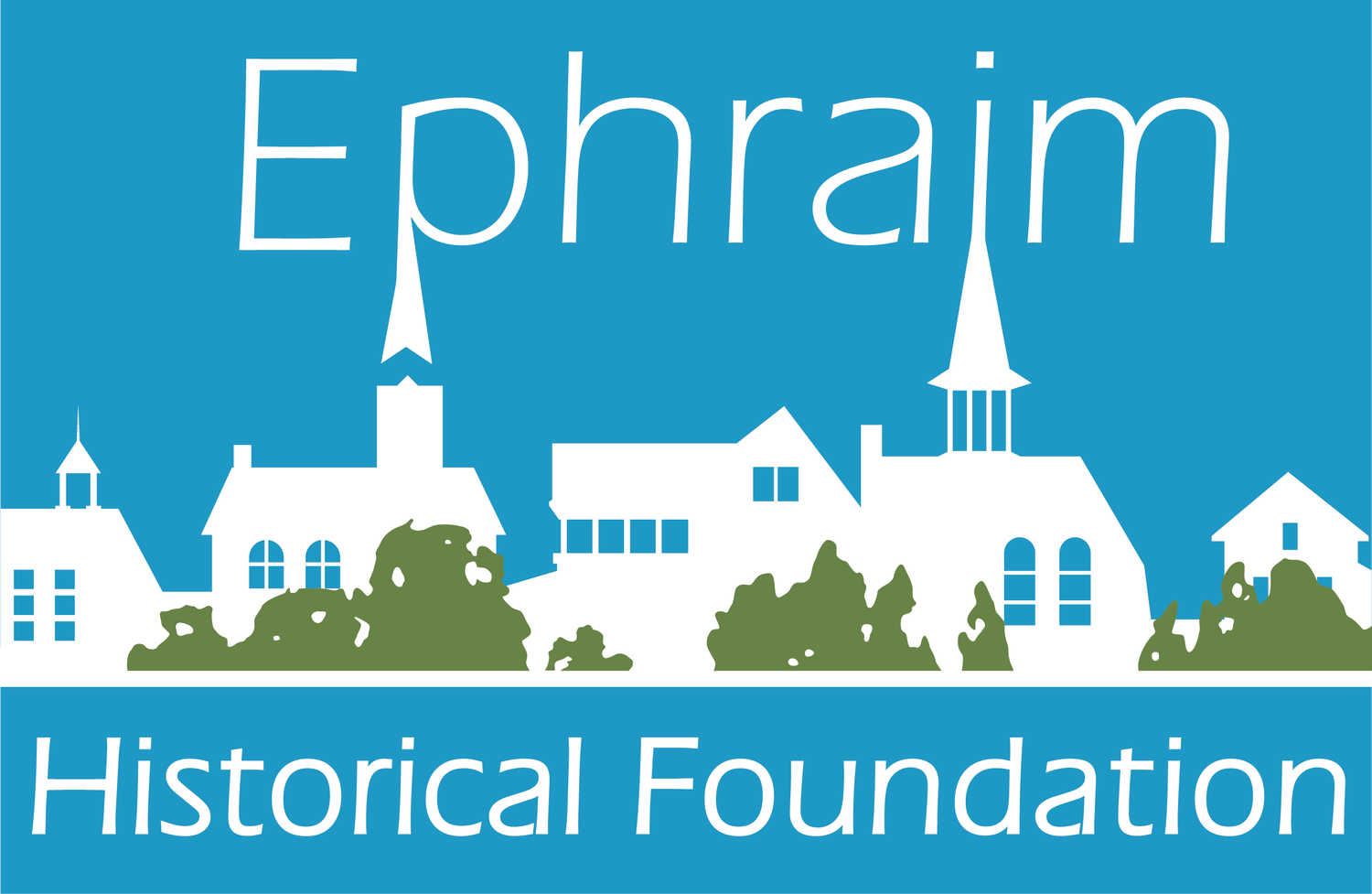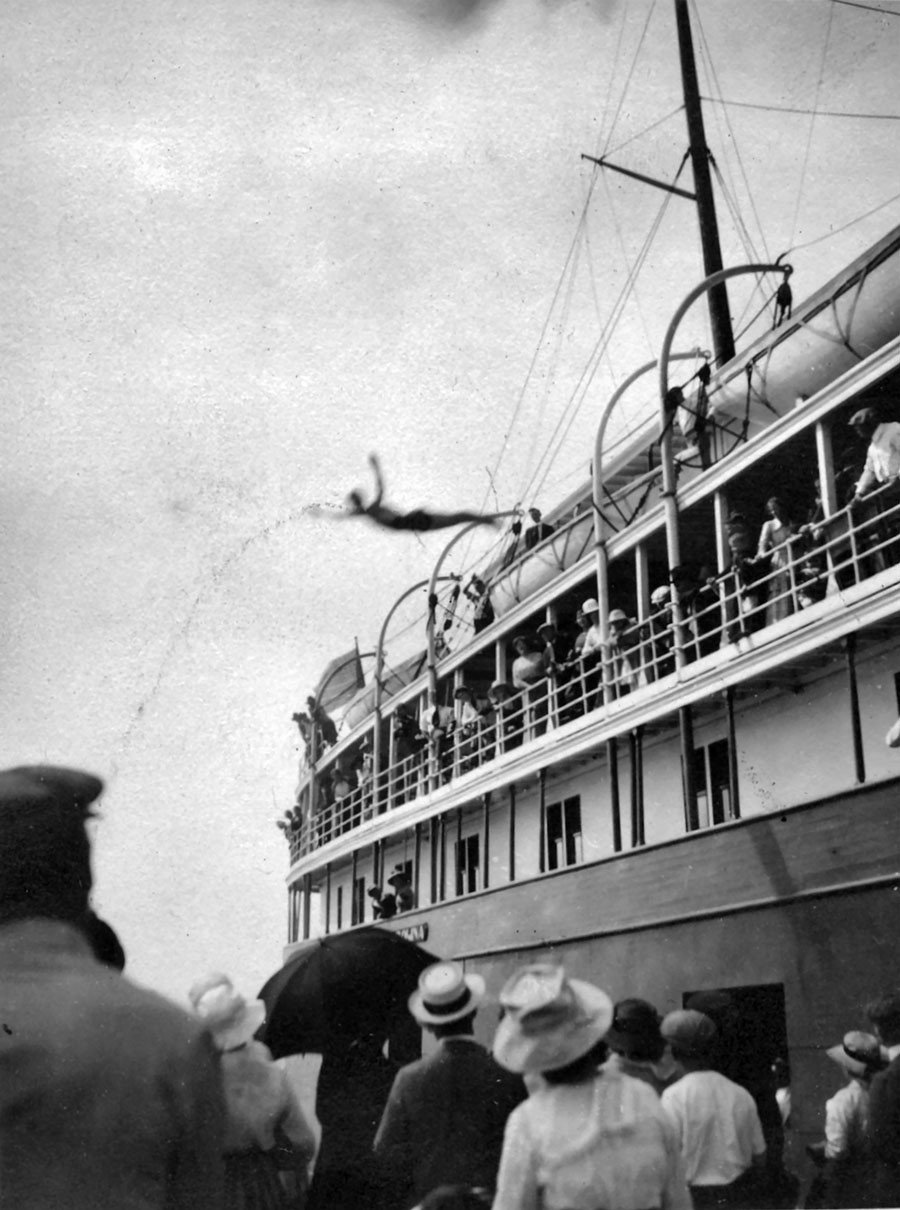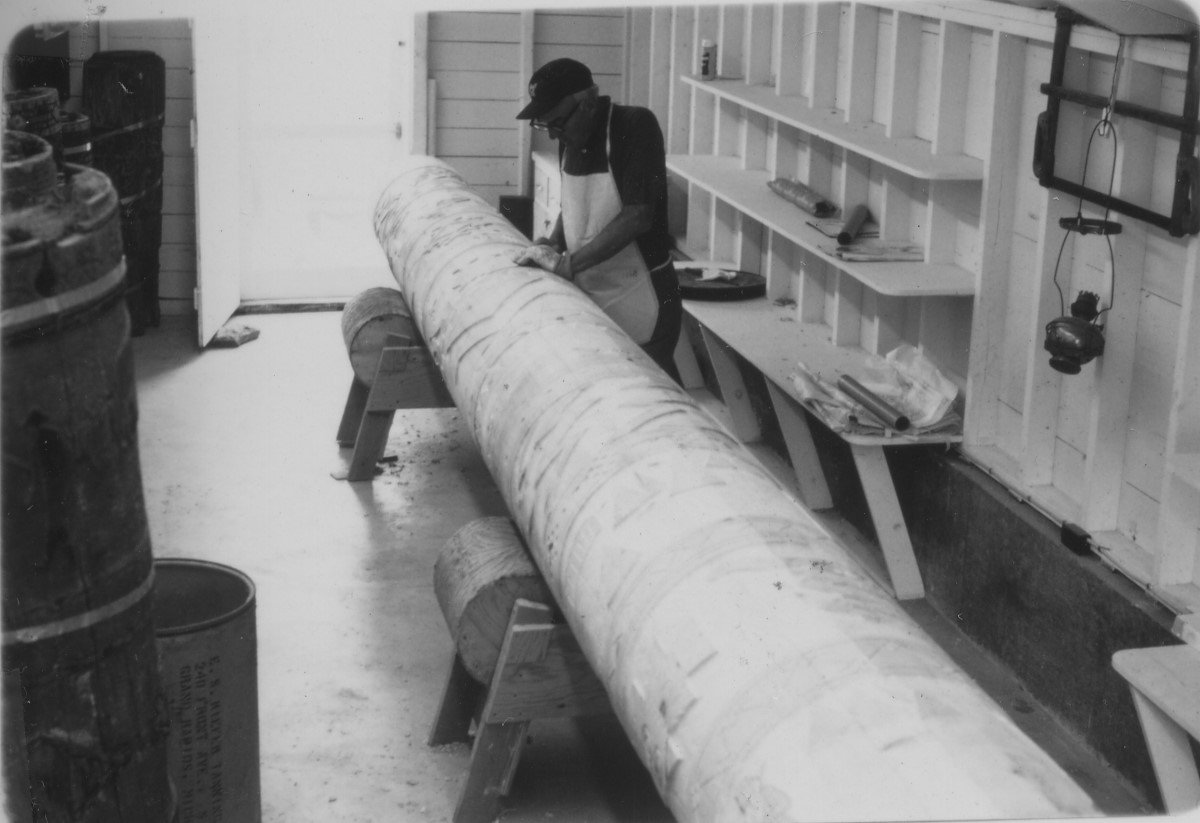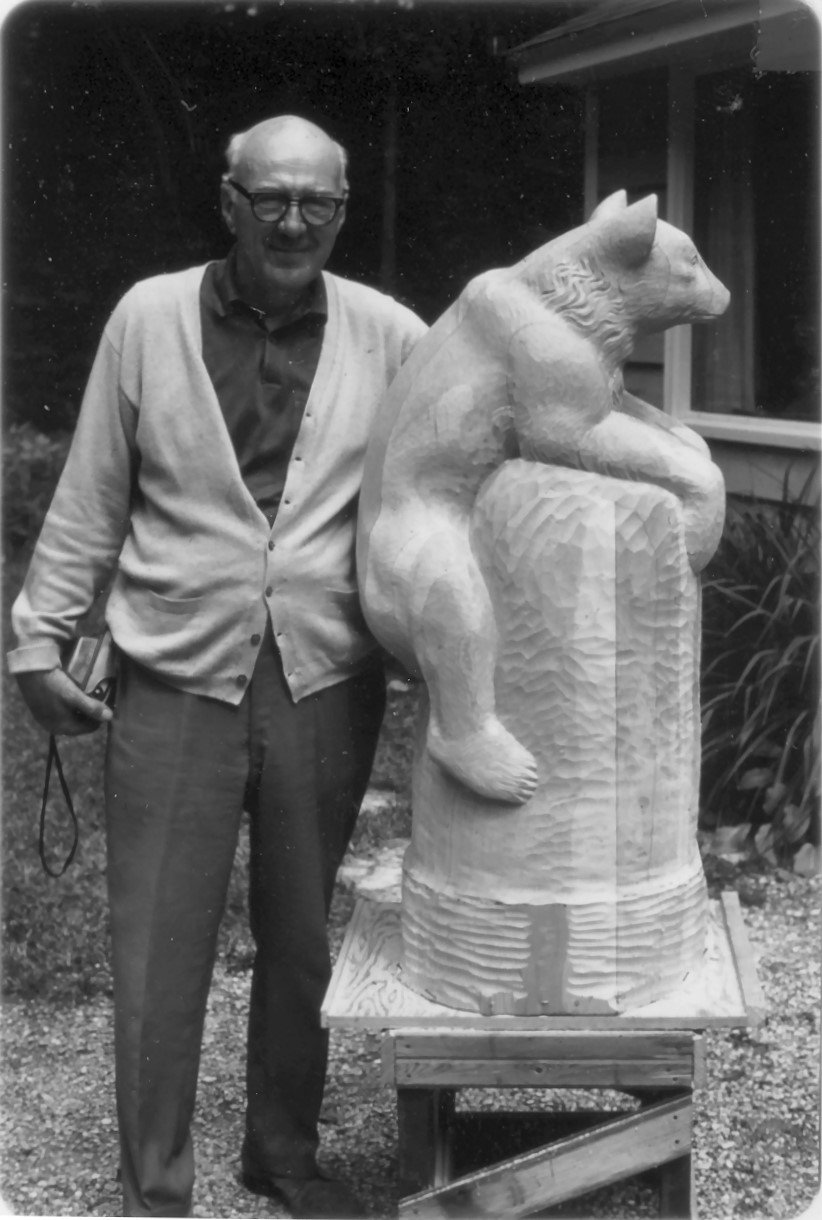A Sense of Place: Poems by Judy Baumgarten Mooney
In 1908, several years before Judy’s birth, her parents, Dr. Martin D. and Mrs. Julia Hardin, built a summer home on Dane Street in Ephraim. Judy (1913-1985) came to Ephraim every summer as a child, along with her brothers Parker, Adlai, and Martin. Her sister, Letitia, died in the Influenza Pandemic that began in 1918. Judy continued summering in Ephraim every year throughout her life.
Click on the photos below to see three images of the Hardin boys, Julia’s brothers. All three were excellent swimmers, one of whom is the diver off the SS Carolina in the photo on the left, early 1900s. In the middle photo, Adlai Hardin works in the Anderson Store tool room carving a replica of the memorial pole, late 1960s. In the image on the right, Adlai Hardin stands next to the carved bear ("mko" in Potawatomi means bear) that once stood atop the pole. The pole (original and then replica) stood at the Peninsula State Park Golf Course from 1927 to 2022.
A Gifted Poet
Judy was outgoing but shy about sharing her poems, many discovered by her children after her death. They described their mother’s writing process as “a need to punctuate some poignancy, some deep emotion whether triggered by something as fleeting as ‘moon-shadows’ in 1934 or ‘tiny towns’ seen from a train 50 years later, or something permanent like love and death." (Quoted from the foreword in My Slice of Time: The Collected Poems of Judy Baumgarten Mooney, Woodwinds Press, 1986, published privately by the family.)
Judy Baumgarten Mooney The espadrille shoes (click here) indicate the 1970s as the decade the photo was taken. Photo courtesy of daughter Letitia Shields who wrote, "Everybody who knew her will be instantly drawn to this remembrance of her. She gave this degree of intense focus and love to everyone she encountered."
She had many other talents and interests, too. Judy sang opera as a young woman. This explains her longtime support of the Peninsula Music Festival. She was also deeply involved in hospice, a movement that grew in London in 1948 and was founded in the United States in 1971. After her children were grown, Judy returned to school to earn a Masters Degree in Counseling which led ultimately to her work in the hospice movement. She soon founded a hospice in St. Louis and was doing the same in Door County at the time she penned "Sunlight Has Broken Through the Gray".
Sunlight Has Broken Through the Gray
Sunlight has broken through the gray
Small patches of blue sky are there
Above the cliff.
I think I'll take a walk
In snow and wind
To freshen my burst lungs
And try to come alive awhile.
Judy Baumgarten Mooney, 1981
Landscape and Imagery in Sunlight Has Broken Through the Gray
Sunlight Has Broken Through the Gray hints at the sense of place of Ephraim. Judy wrote the poem in winter after travelling from St. Louis to Ephraim. Her husband had just died and she sought solace by immersing herself in memories of a long and loving marriage. She sought healing by returning to a treasured, familiar place.
Sense of place (click here), a term coined by social scientists, elicits a profound feeling of belonging and connection to a specific geographical location. Attachment is emotional, even mystical.
In Sunlight Has Broken Through the Gray the phrase “patches of blue sky above the cliff” allude to Ephraim’s landscape. Vividly sparse, the seven-line poem evokes a universal theme: living through deep grief and loss. Imagery, grounded in landscape, moves the poem past grief towards hope. Descriptions of nature are somber ("gray") and arduous ("a walk in snow and wind"), yet hopeful. The poem's narrative voice, called persona by academics, sees scraps of blue sky emerging through ashen clouds "above the cliff." The persona chooses to "come alive again" after an unexpected (note the word "burst") event.
A Poem with Door County Touchstones
The following poem, "Now When The Summer Comes" also incorporates physical touchstones of the Door Peninsula. It was written soon after her husband, Dr. Walter Baumgarten, Jr., had returned from World War II. They were married for thirty-eight years.
Historic postcard of the second Eagle Tower which replaced the original 1914 structure. Circa 1932.
Special thanks to Letitia Shields who provided biographical information and editorial guidance.
Submitted in 2021, revised in 2023. Kathleen Harris, EHF Educator
Now When the Summer Comes
Now when the summer comes, and for a while
We live through all the haunts we knew when we were young,
We say, "Let's climb the Tower tonight."
And this we do.
The lake sprawls far below entwined by blacknesses
Which are the juts of land.
The forest stillness shatters
As an owl flies hooting through the dark.
The stars are magnified a hundred-fold in brightness,
When across the sky a meteor flings out
Its stream of silver hair we think
Our very breathing made it so.
You turn, and put your arms around me,
While on tiptoe I reach my arms about your neck.
Our eyes meet first,
And then our lips,
In full content and knowledge
Of each other's love.
How far a cry this joy is from that earlier fierce anguish
We knew on this same Tower.
Instead of seeing you
My eyes look upward now into the sky
And meet the face of God.
For loving you, my own, is very near to praying.
Oh God, if in Thy wisdom Thou shouldst take
My husband from me ere his years are run,
Help me to cup my heart, like little children's hands,
To hold the joy of life
As fresh as it is now.
Judy Baumgarten Mooney, 1948






